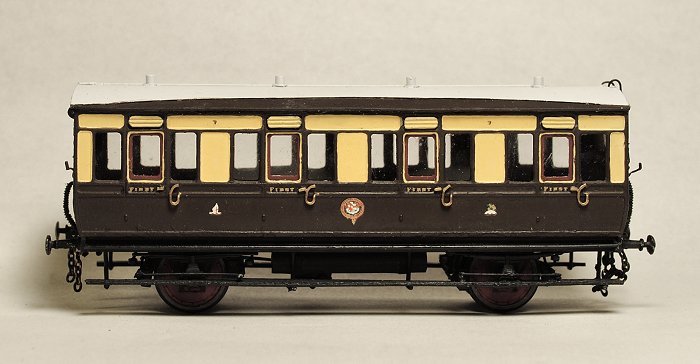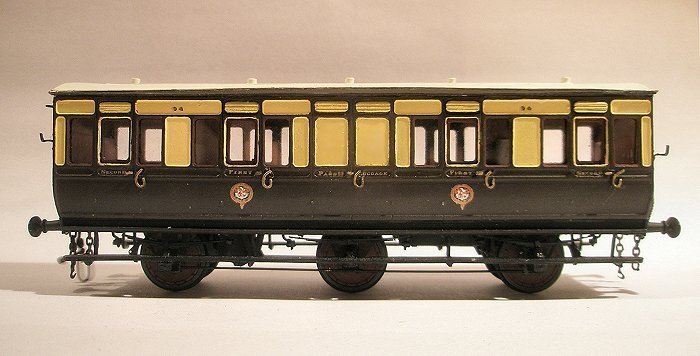Well I finally got around to finishing my little restoration job on these old coaches.
Got the painting done reasonably quickly, but then followed the usual issues: “Now for the glazing. Oh wait, I’m out of Testor's. Must order some more. Now where did I order it last time? Better google it. Ah there’s RMweb, well maybe just a couple of minutes on there then. Oh look, someone's discussing the cost of tea at exhibitions. Gotta follow that! Well that was a pleasant hour on RMweb. Wait, did I forget something? Oh well, tomorrow then.” Etc!

But I got there in the end (click images if not sharp). Here's the 6-wheel Van to dia V13, converted from a W3 . I use a simplified version of the livery as it would have been seen around 1906 on my coaches. I did have a bit of trouble painting the panels on a couple of them, as my normal method works best on new and sharply defined panels.

Here's the R1 All first. A big word of thanks to all who helped find the right running numbers for this diagram, both here and on the gwr e-list. The R1s were numbered 1-8 and I initially thought this was a great opportunity to have a coach numbered "1". I even applied the first transfer, but then found it simply looked odd! So I chose no. 7 instead.

Here's the G20, a Third class saloon. The glazing has been fitted, I just like it clean. So much for the interior detailing, you can't really see any of it. Oh well. In case you're wondering, the Weasel is on the other side.

Here's one I restored earlier, one of the little 4-wheel V2s. I have to say Colin had a great taste in coaches when he originally built these a long time ago.

Another one from the first batch I restored, the U16 6-wheel compo, with the luggage windows now appropriately "blinded".

And finally a line-up of the three newly done coaches, ready for service. As the header says, this is all very low-tech but it has been a nice project and I like the idea of giving Colin's old coaches a new lease on life. There's a message in there for all of us balding old farts, I think: It's never too late!
Edited by Mikkel
-
 25
25
-
 1
1





28 Comments
Recommended Comments
Create an account or sign in to comment
You need to be a member in order to leave a comment
Create an account
Sign up for a new account in our community. It's easy!
Register a new accountSign in
Already have an account? Sign in here.
Sign In Now